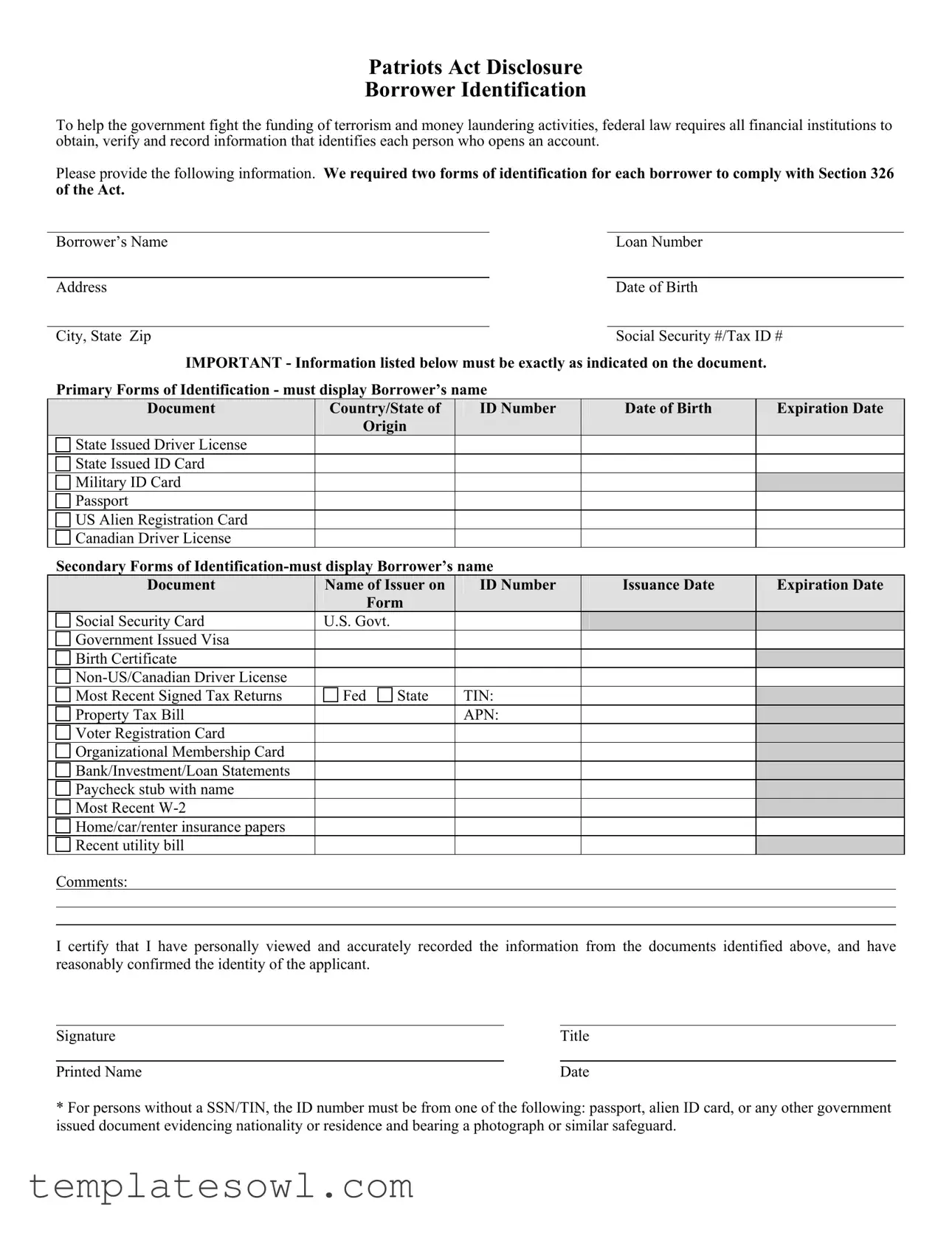What is the purpose of the Patriots Act form?
The Patriots Act form is designed to help the government combat terrorism financing and money laundering. By collecting specific information from individuals who open financial accounts, the form assists in verifying identities and documenting transactions accurately.
Who is required to complete the form?
Anyone looking to open a financial account is required to fill out the Patriots Act form. This includes borrowers applying for loans, opening bank accounts, or any other financial transactions that fall under the federal regulations outlined in the Patriots Act.
What information is needed to complete the form?
You will need to provide your name, address, date of birth, Social Security number or Tax ID number, and other identifying details. The form also requests two forms of identification to ensure compliance with federal law.
What types of identification are acceptable?
Acceptable primary forms include government-issued IDs like driver licenses, military IDs, or passports. Secondary forms can be things like Social Security cards, birth certificates, or recent utility bills. Ensure the IDs display your name, and make use of the complete list provided in the form to avoid errors.
What should I do if I don't have a Social Security Number?
If you do not have a Social Security number or Tax ID number, you can provide identification from other government-issued documents. These must include a photograph and evidence of your nationality or residence, such as a passport or an alien ID card.
How is the information on the form used?
The information gathered is used primarily for identity verification and compliance purposes. Financial institutions must keep accurate records as part of their obligation under the law, which also helps in preventing illegal financial activities.
Is my information secure?
Your information will be handled with care and confidentiality. Financial institutions are required to protect your data and use it strictly for compliance with federal laws. Always make sure that you're providing your information to trusted entities.
What happens if I fail to provide the required information?
If you do not provide the required information or identification, your application for a financial product or service may be denied. Compliance with the Patriots Act is mandatory for all financial institutions, so it’s essential to follow the guidelines carefully.
Can I update my information later?
Yes, you can update your information as needed. If there are any changes to your personal details or identification, make sure to inform your financial institution promptly to keep your records current and accurate.

